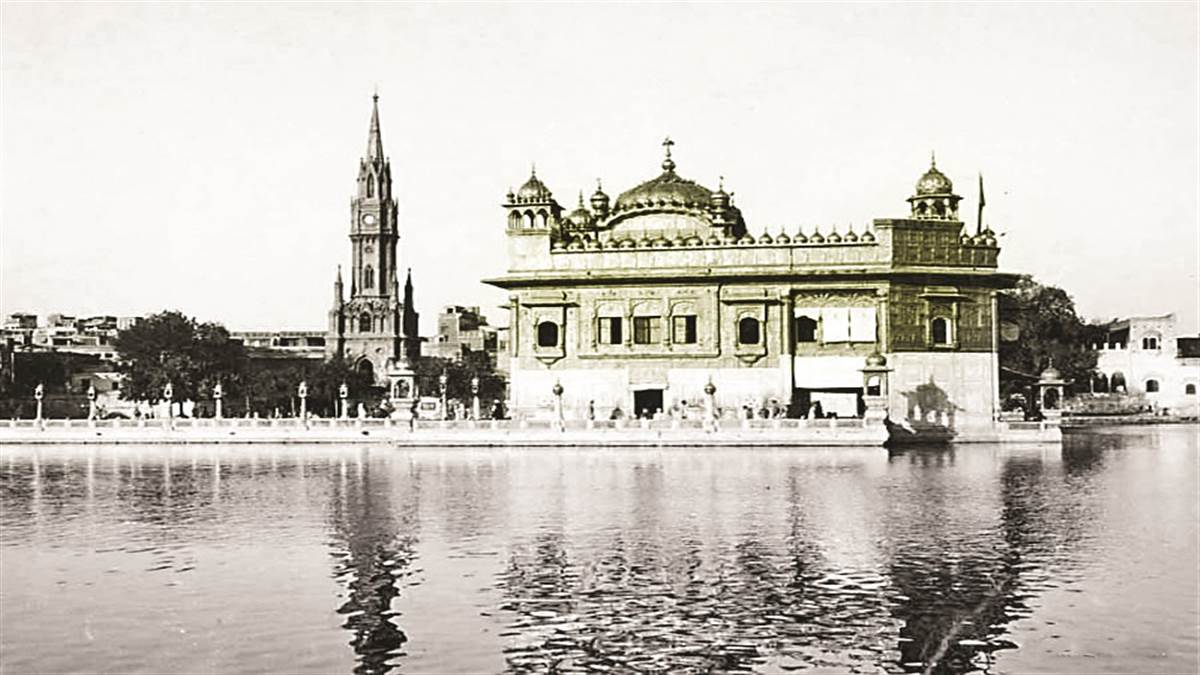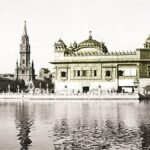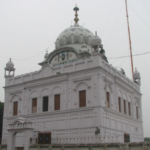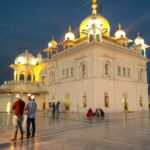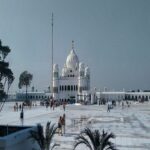[For Punjabi Version – Click Here]
Sri Harmandir Sahib
The Sacred Abode and Spiritual Center of Sikhs Amritsar, founded by Guru Ramdas Sahib in 1574, is a major city for Sikhs, housing significant historical sites and institutions. Sachkhand Sri Harmandir Sahib, also known as the Golden Temple, is a special place for Sikhs. It’s like God’s house named after “Hari,” which means God. Sikhs around the world often express their desire to visit Sri Amritsar and pay their respects at Sri Harmandir Sahib during their prayers.
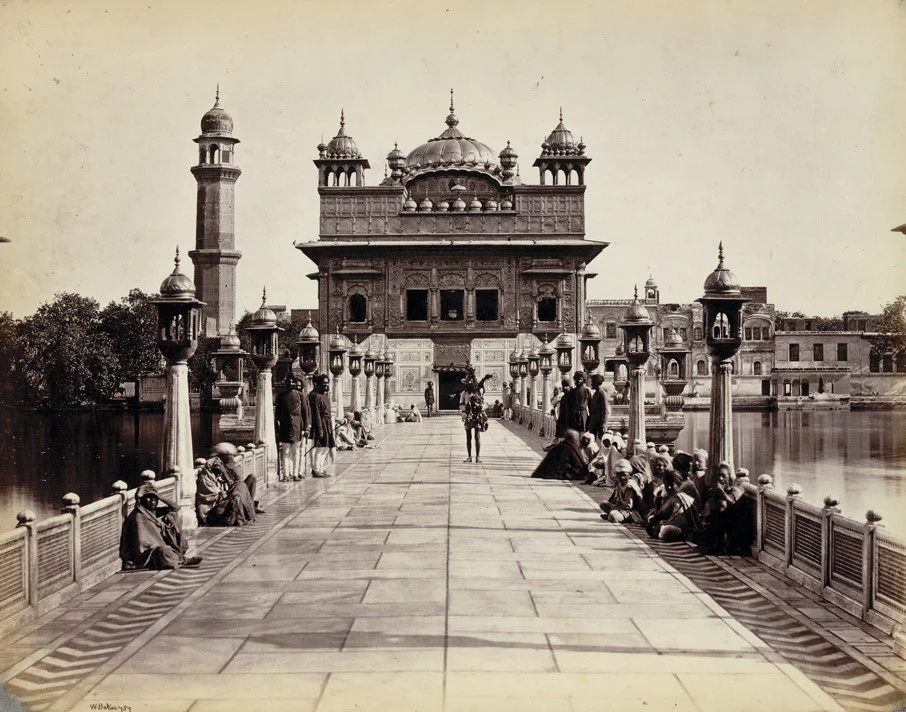
The Golden Temple is called so because it looks beautiful, with a coating that shines like gold, especially for those who speak English. It’s a significant and cherished place for Sikhs, and many include it in their daily prayers, known as Ardas. People from all over the world wish to visit Sri Harmandir Sahib to feel the spiritual connection and show their reverence to God. It’s a place that holds a special meaning for Sikhs, and they consider it as God’s own home.
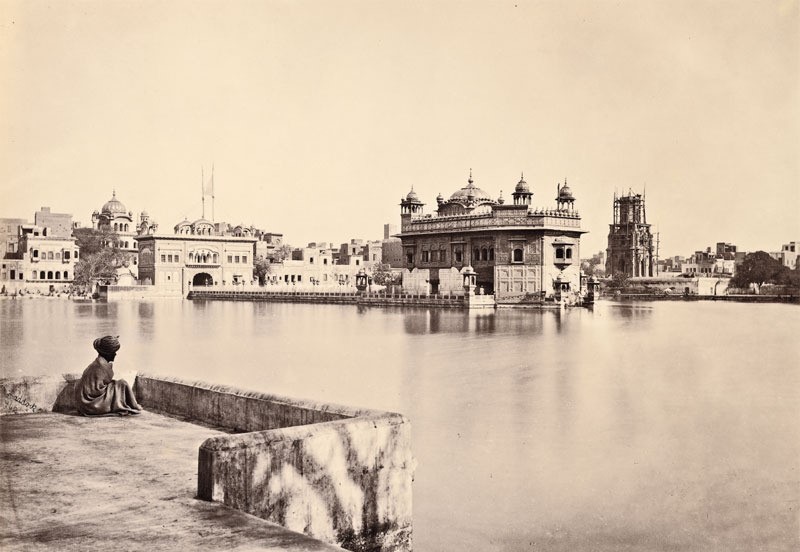
Guru Arjan Dev Ji, who was the Fifth Nanak (spiritual leader), had the idea of building a central place of worship for Sikhs. He also designed the architecture of Sri Harmandir Sahib, which is also known as the Golden Temple. Before this, Guru Amardas Sahib, the Third Guru, had planned to dig the holy tank called Amrit Sarovar. However, the actual execution of this plan was carried out by Guru Ramdas Sahib under the guidance of Baba Budha Ji. The land for this sacred site was acquired by earlier Guru Sahibs, either by payment or for free, from the landlords (Zamindars) of the nearby villages.
Foundation and Construction
This construction involved two main projects happening simultaneously the excavation of the holy tank (Sarovar) and the establishment of a town settlement. Both of these projects were initiated in 1570 and were successfully completed in 1577 A.D. So, Guru Arjan Sahib’s vision and the collective efforts of the Sikh community led to the creation of Sri Harmandir Sahib and its surroundings.
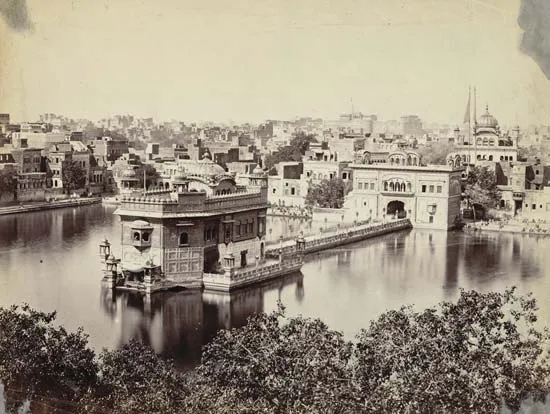
Guru Arjan Dev Ji,laid the foundation stone of Sri Harmandir Sahib, also known as the Golden Temple, with the help of a Muslim saint named Hazrat Mian Mir Ji of Lahore on December 1, 1588. Guru Arjan Dev Ji, personally supervised the construction, and notable Sikh figures like Baba Budha Ji, Bhai Gurdas Ji, Bhai Sahlo Ji, and other devoted Sikhs assisted him.
Unlike traditional Hindu temple architecture, which typically elevated structures, Guru Arjan Dev Ji chose to build Sri Harmandir Sahib at a lower level. Additionally, unlike Hindu temples that usually have a single entrance and exit gate, Guru Sahib designed the Golden Temple to be open from all four sides. This unique architectural approach symbolized the emergence of a new faith, Sikhism. Guru Arjan Dev Ji intended the Golden Temple to be inclusive, welcoming people of all castes, creeds, sexes, and religions.
Architectural Features and Significance of Sri Harmandir Sahib
Guru Arjan Sahib’s architectural choices were distinct. The temple was built on a lower level, unlike traditional Hindu temples, and had entrances on all four sides, symbolizing the inclusivity of Sikhism. Completed in 1601, it became a symbol of the new faith, accessible to everyone without regard to caste, creed, sex, or religion.
The construction of Sri Harmandir Sahib was completed in 1601 A.D., specifically on August or September 1661 Bikrmi Samvat (according to the Sikh calendar), which corresponds to Bhadoon Sudi 1st. Guru Arjan Sahib, during this period, installed the newly created Guru Granth Sahib in Sri Harmandir Sahib. Baba Budha Ji was appointed as the first Granthi, responsible for reading from Guru Granth Sahib.
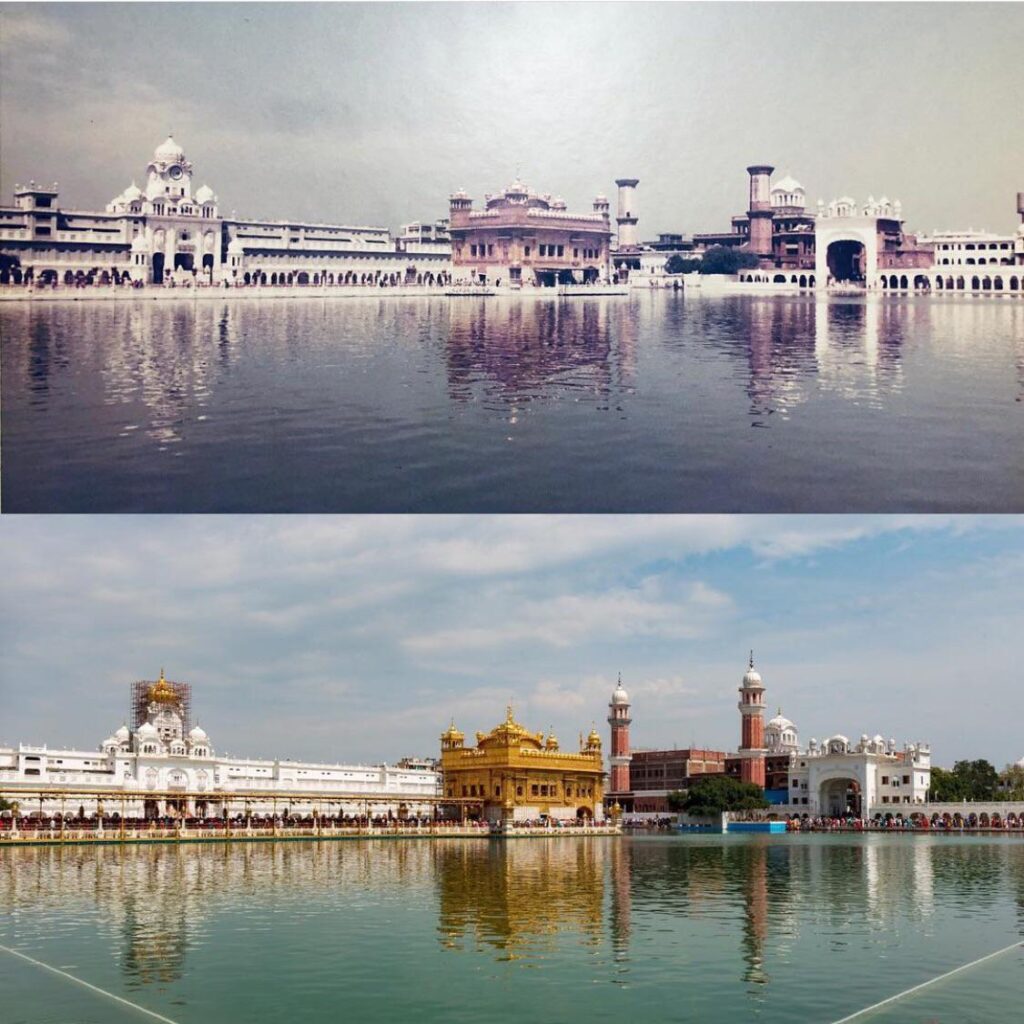
After these significant events, Sri Harmandir Sahib gained the status of “Ath Sath Tirath,” becoming a pilgrimage center for the Sikh Nation. The temple is situated on a 67-foot square platform at the center of the Sarovar (tank), and the temple building itself is 40.5 feet square. It features doors on all four sides – East, West, North, and South. At the end of the causeway, there is an arch called Darshani Deori, which is about 10 feet in height and 8 feet 6 inches in width. The door panes are artistically decorated.
Connecting to the main building is a 202-foot-long and 21-foot-wide causeway or bridge. This bridge leads to the ‘Har ki Paure‘ (steps of God). Surrounding the main shrine is a 13-foot-wide circumambulatory path called ‘Pardakshna,’ allowing devotees to walk around the sacred space. On the first floor of ‘Har ki Paure,’ continuous readings from Guru Granth Sahib take place.
Architectural Marvel of Sri Harmandir Sahib: A Fusion of Muslim and Hindu Styles
The main structure of Sri Harmandir Sahib has three floors. The front, facing the bridge, is adorned with repeated cusped arches. The roof of the first floor is about 26 feet and 9 inches high.
At the top of the first floor, there is a 4 feet high parapet on all sides, featuring four ‘Mamtees’ at the corners. Directly above the central hall of the main sanctuary, there is a third story. It’s a small square room with three gates, where regular recitation of Guru Granth Sahib takes place. On top of this room, there is a low fluted dome called ‘Gumbaz,’ decorated with lotus petal motifs at the base and an inverted lotus at the top. This dome supports the ‘Kalash,’ topped with a beautiful ‘Chhatri.’
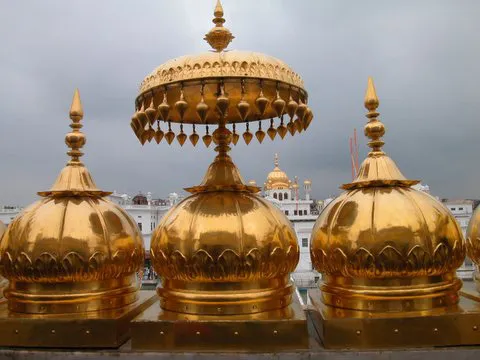
The architecture of Sri Harmandir Sahib reflects a unique blend of Muslim and Hindu construction styles, making it one of the best architectural examples globally. It’s often mentioned that this architecture has established an independent Sikh school of architecture in the history of art in India.
Defending the Sanctity of Sri Harmandir Sahib
The Sri Harmandir Sahib faced invasions and destruction by Afghan and other invaders multiple times. In 1740, after the martyrdom of Bhai Mani Singh Ji, Massa Ranghar, the Kotwal of Amritsar, took control of Sri Harmandir Sahib. He turned it into a civil court and organized inappropriate gatherings. This deeply upset the Sikhs. In response, two warriors named Sukha Singh and Mahtab Singh took daring action. Disguised as peasants, they entered the temple complex, beheaded Massa Ranghar with a single stroke of the kirpan, and escaped with the severed head on one of their spears. Following this incident, security around Sri Harmandir Sahib was intensified, and the temple was temporarily closed.
In 1746, Lakhpat Rai, a Hindu Diwan of Lahore Darbar, aimed to eliminate the entire Sikh Nation. Seeking revenge for his brother Jaspat Rai’s death, he polluted the Sarovar and desecrated Sri Harmandir Sahib in 1746. Lakhpat Rai even prohibited the use of the term ‘Guru.’ The Mughal forces, led by Diwan Lakhpat Rai and Yahiya Khan, marched against the Sikhs, resulting in a fierce battle known as the first Ghalughara in June 1746. In this conflict, nearly seven thousand Sikhs were martyred, with three thousand publicly executed in Lahore (now called Shaheedganj).
In response, under the leadership of Sardar Jassa Singh Ahluwalia, the Sikhs retaliated and reclaimed both the city and Sri Harmandir Sahib, killing Salabat Khan in March 1748. They joyously celebrated Vaisakhi by restoring the sanctity of the holy Sarovar, reestablishing the daily Maryada at Sri Harmandir Sahib, and convening a ‘Sarbat Khalsa.’ The Diwali festival of 1748 was also enthusiastically observed.
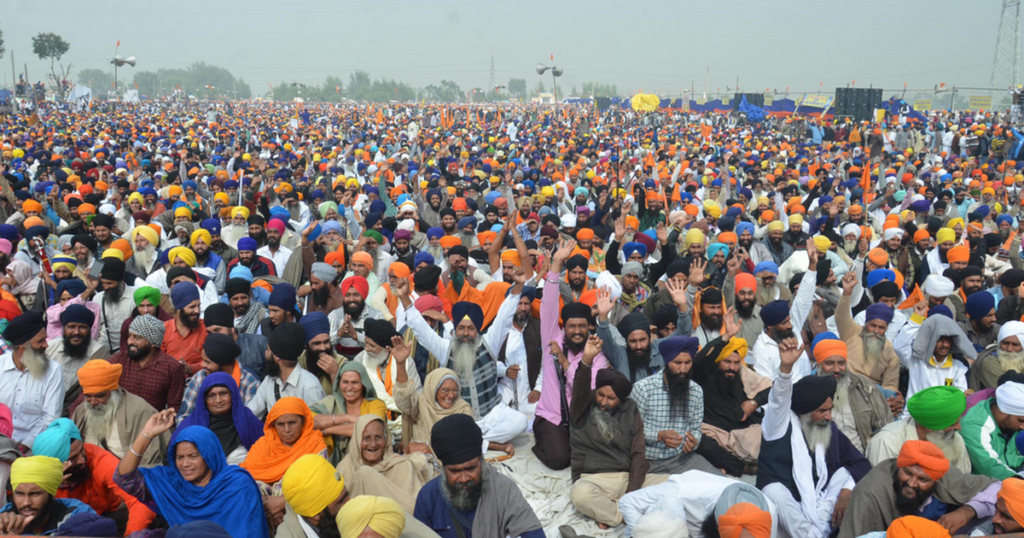
In 1757, Ahmad Shah Abdali launched a second invasion of India and attacked Amritsar. He destroyed Sri Harmandir Sahib and filled the Sarovar (tank) with garbage. Upon learning of this sacrilege, Baba Deep Singh ji Saheed, the leader of ‘Misl Shaheedan,’ immediately set out to avenge the insult. A fierce battle occurred at the village Gohalwar near Amritsar, where Baba Deep Singh was fatally wounded. Despite his severe injuries, he bravely continued fighting, holding his severed head with his left hand and striking down enemies with his right. Ultimately, this remarkable warrior sacrificed his life to uphold the sanctity of Sri Harmandir Sahib.
Abdali’s Repeated Assaults on Sri Harmandir Sahib (1762, 1764, 1767)
On April 10, 1762, Ahmed Shah Abdali once again invaded Amritsar and Sri Harmandir Sahib, following the brutal massacre of Sikhs at Kup Harira. During this event, thousands of armed and unarmed Sikhs had gathered at the temple for a holy bath. Numerous Sikhs lost their lives defending their beloved shrine. Sri Harmandir Sahib was again demolished with gunpowder, and the holy tank was desecrated. Legend has it that as the shrine was being destroyed, a flying brick struck the Shah on the nose, causing a fatal wound.
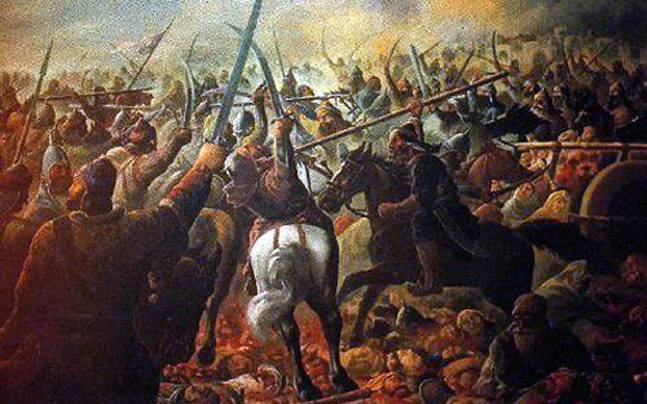
In December 1764, Ahmed Shah Abdali once again attacked Sri Harmandir Sahib with the aim of annihilating the entire Sikh Nation. However, before his arrival, the Sikhs vacated the city, leaving only thirty Sikhs near Sri Harmandir Sahib. Under the leadership of Baba Gurbax Singh ji, these Sikhs offered staunch resistance and were all martyred. Abdali, upon reaching the site, demolished the newly reconstructed structure of the shrine and leveled the holy tank. Prior to his final departure from India in 1767, Ahmed Shah Abdali launched another attack on Amritsar. However, he did not dare to enter Sri Harmandir Sahib, and it remained under the control of the Sikhs thereafter. (In June 1984, it was attacked by the Indian Army during Operation Blue Star, resulting in the death of several hundred innocent Sikh pilgrims).
Management and Transformations of Sri Harmandir Sahib Over Time
After the martyrdom of Bhai Mani Singh ji, the management of Sri Harmandir Sahib was collectively handled by Sikh MISLS, and many mansions (bungas) were constructed.
The Sikh Misls were military confederacies or bands that emerged in the 18th century in the Punjab region of South Asia.
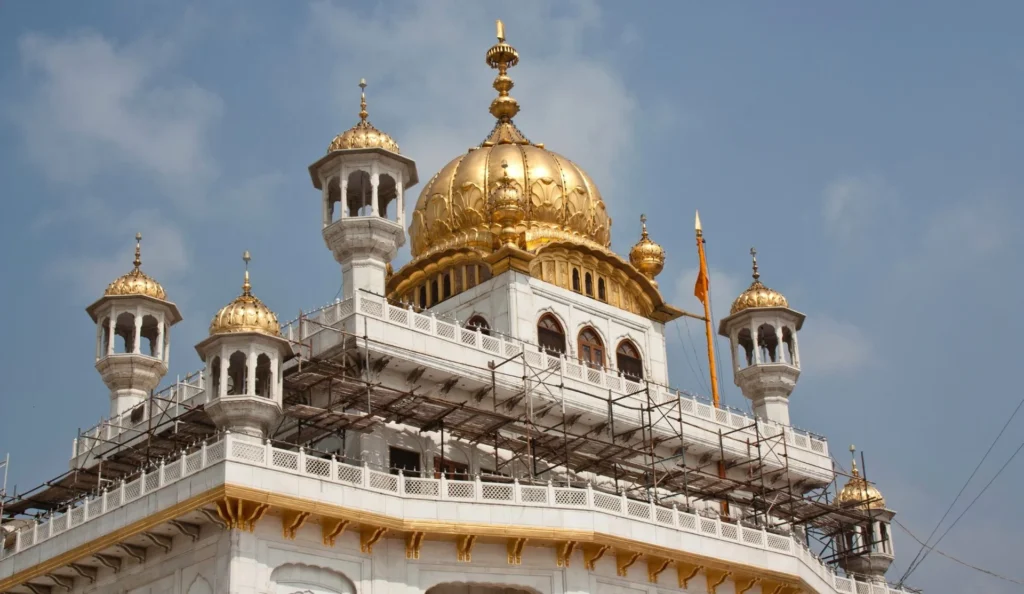
The term “Misl” is derived from the Punjabi word “misāl,” which means example or model. These Misls played a crucial role in shaping the political landscape of the Punjab during a period of turmoil and conflict.
Sikh leaders refrained from interfering in the temple’s affairs when visiting Amritsar. General gatherings were conducted at Akal Takhat Sahib in the presence of Guru Granth Sahib. During Maharaja Ranjit Singh’s rule, the administration of Sri Harmandir Sahib came under the control of the state. The Maharaja actively contributed to the development and beautification of Sri Harmandir Sahib.
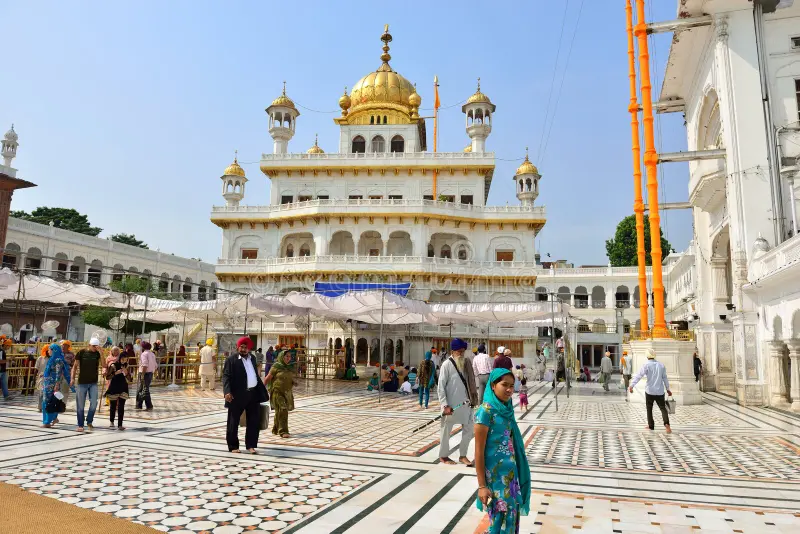
During the time when the British were in charge, Sri Harmandir Sahib was managed by one person called the ‘Sarbrah’ (Manager) appointed by the Deputy Commissioner of Amritsar. The Deputy Commissioner set up a committee with so-called Sikh leaders and others. The religious officials of the temple, like Pujaries, Mahants, and Ragis, continued to receive their share of offerings. Unfortunately, immoral activities occurred within the temple with the Sarbrah’s approval. This caused dissatisfaction among Sikhs, leading to the Sikh Gurdwara Reform Movement. Once again, Sikhs had to make sacrifices to reclaim Sri Harmandir Sahib and other holy places. The Shiromani Akali Dal played a key role in this struggle. The Gurdwara Reform Movement concluded with the Sikh Gurdwara Act in 1925. This law gave control and management of Sri Harmandir Sahib to the Shiromani Gurdwara Parbandhak Committee, a group elected by adult Sikhs through voting.
Implementation of the Sikh Gurdwara Act
The Sikh Gurdwara Act, enacted in 1925, marked a significant milestone in the Gurdwara Reform Movement. Under the provisions of the Act, the control and management of Sikh Gurdwaras, including the revered Sri Harmandir Sahib (Golden Temple) in Amritsar, were vested in the Shiromani Gurdwara Parbandhak Committee (SGPC).
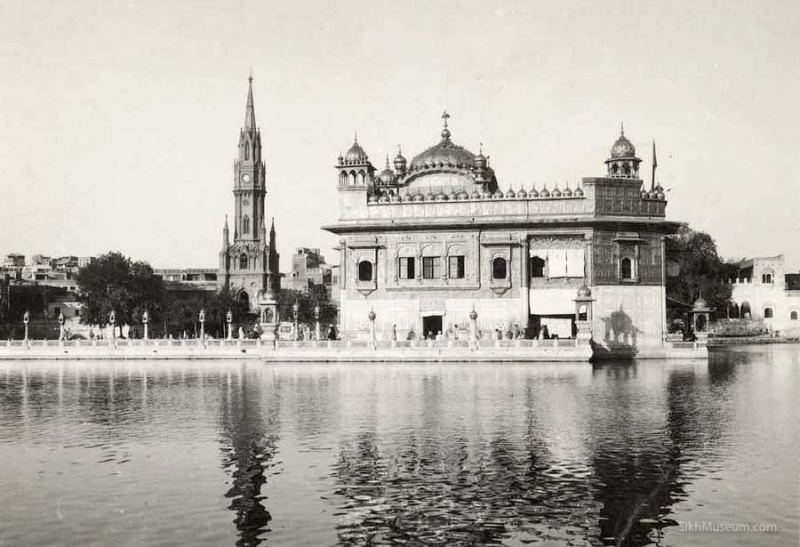
Formation and Role of SGPC
The SGPC was established as a representative body, elected by adult Sikhs through a democratic voting process.The committee was entrusted with the responsibility of overseeing the administration of Sikh Gurdwaras, promoting Sikh religious and educational activities, and managing the endowments and properties associated with these religious institutions.
Centralization of Gurdwara Management
The Sikh Gurdwara Act aimed at centralizing the administration of Gurdwaras to prevent mismanagement, corruption, and exploitation that had been prevalent under the earlier system of hereditary priests and mahants.
End of Mahant System
One of the primary objectives of the Gurdwara Reform Movement was to end the control of Gurdwaras by hereditary priests or mahants who were often accused of corruption and maladministration. The Sikh Gurdwara Act led to the removal of the mahants and the establishment of democratic governance through the SGPC.
Impact on Sikh Community
The enactment of the Sikh Gurdwara Act had a profound impact on the Sikh community, instilling a sense of ownership, accountability, and democratic participation in the management of their religious institutions.
Sikh Identity and Autonomy
The successful conclusion of the Gurdwara Reform Movement and the establishment of the SGPC reinforced the Sikh community’s commitment to maintaining control over their religious sites and practices.It became a crucial element in the larger struggle for Sikh identity and autonomy.
Legacy and Continued Role of SGPC
The SGPC continues to play a vital role in overseeing the management of Sikh Gurdwaras, promoting religious education, and engaging in charitable activities. Its significance extends beyond the borders of Punjab, as the SGPC is recognized as a representative body for Sikhs worldwide.
Political Ramifications
The Gurdwara Reform Movement had political ramifications as well, contributing to the awakening of Sikh political consciousness and activism that later played a role in broader political movements in India.
